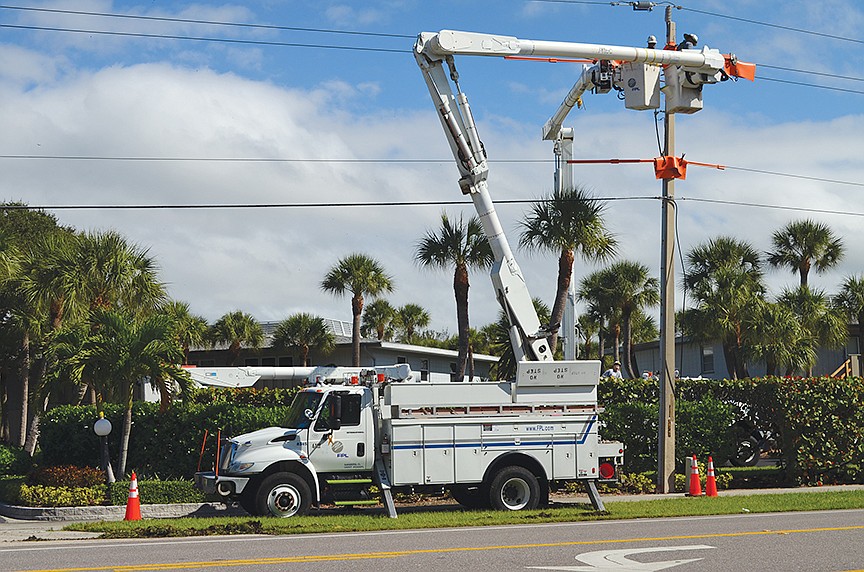- November 24, 2024
-
-
Loading

Loading

This is the debate that confronts every elected official: the collective versus the individual.
Which is more important? Which takes precedence?
Of course, you know the answer. The right answer is the individual. But invariably, since after the Civil War, the elected let altruism get the better of themselves. They see themselves representing the collective town, the collective county, the collective state. One for all.
Certainly not all for the one, for the individual.
So it came as little surprise that the Longboat Key Town Commission members unanimously endorsed last week collectivism and redistribution over the individual.
As the town moves toward a second referendum to fund the conversion of overhead utility lines to underground lines, the commissioners instructed town staff to try to craft a referendum that would require all Longboat Key property owners to pay for everyone’s underground utility lines — even if they already have paid for their own underground lines.
They appear to be favoring another setup like the town’s beach taxing districts. As most property owners know, in 1992, voters narrowly passed a charter amendment that requires residential property owners on the west side of Gulf of Mexico Drive and all commercial property owners to pay 80% of all beach maintenance costs and those on the bay side of Gulf of Mexico Drive to pay 20%.
The thinking at the time of that vote was that everyone’s property values benefit from the beach, so everyone should pay for beach renourishment.
That same thinking is now driving commissioners to try to devise a referendum that shares the cost collectively of underground utility lines in every neighborhood.
It’s a strategy destined for failure and defeat at the polls.
Imagine this: When the Bay Isles Association decided to relandscape Bay Isles Parkway recently, imagine the reaction if it had taxed all Longboat property owners for the cost of the improvements. But after all, won’t all Longboat residents benefit from the improved looks of one of the town’s busiest and most important streets?
Or what do you think Country Club Shores, Gulf Shore or Bay Isles residents would say if Longbeach Village residents taxed them to help fund a trapper to round up the Village’s peacocks? After all, wouldn’t the collective value of Longboat properties improve if the peacocks were eradicated?
Or what if Country Club Shores residents decide they want extra security on their canals and want to install 24/7 surveillance cameras? Should Village residents be taxed to pay for them? Why not? The cameras would serve to deter crime, improving the overall safety of the Key.
In each of these instances, you can be sure there would be intense protests against making everyone pay for these localized improvements.
So it should be with making everyone — including property owners who already have paid for underground lines — pay for underground power lines in each neighborhood. There should be protests; it’s not the way to go.
Unlike police and fire service or street maintenance, the distribution of electricity is not a town government responsibility. It is not an altruistic venture requiring some Longboaters to support others. Villagers are not responsible for the electrical well-being of Country Club Shores residents and vice versa.
In fact, the distribution of electricity is a contractual arrangement between individuals and a private-sector electric company. Individuals buy and use however much electricity they want.
Likewise, that arrangement extends to how each property owner wants his power delivered — via above-ground wires or below-ground wires. That’s an arrangement between the power company and the individual, or the power company and each neighborhood grid.
Some town commissioners don’t like the idea of every neighborhood acting on its own behalf. They fear the cost of converting will scare off some neighborhoods and result in some streets and neighborhoods with above-ground wires and some with underground wires. But that condition already exists on Longboat today.
What’s more, when you canvass the Key, you can see some neighborhoods and developments where underground lines may not make practical or economic sense — e.g. Twin Shores, Gulf Shore or St. Judes Drive.
When developers and property owners created every neighborhood on the Key, they made choices — on lot sizes, street widths, curbs, sidwalks and utility lines. That’s the American way — freedom to choose, individual preferences. And that’s why Longboat Key has a wide variety of neighborhood styles.
From a practical standpoint, allowing each neighborhood to set up its own taxing district for underground utility lines is and will be complex. But that is the right and fair way to go for every Longboater. Don’t force some to subsidize others. Don’t force some to pay who can’t afford or don’t want the added cost of underground lines. Every neighborhood should make its own individual choice.